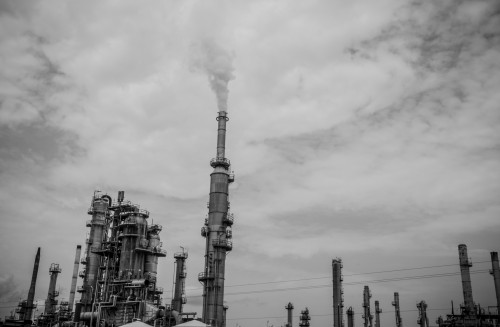In response to industry petitions, the EPA is proposing two sets of technical amendments to Clean Air Act (CAA) regulations governing petroleum refineries. The first set comprises changes to prior amendments the Obama EPA made in December 2015 to the National Emission Standards for Hazardous Air Pollutants (NESHAP) for existing sources. The second set consists of changes to amendments to the New Source Performance Standards (NSPS) for refineries, which the Agency also promulgated in December 2015.

In discussing the benefits of the proposal, the EPA focuses almost entirely on the cost savings for the regulated sector and says little about any additional environmental benefits.
“The total cost savings from implementing these proposed amendments is expected to be $77 million capital investment and annualized costs of $12 million,” says the Agency. “Most of the cost reduction is attributable to the proposed amendments for maintenance vent requirements, recordkeeping, and reporting. We expect the proposed revisions will have an insignificant effect on emission reductions.”
MACT 1 and MACT 2
The NESHAP proposal addresses two packages of regulations. The first, called the maximum achievable control technology (MACT) 1, was issued in 1995 and covers refinery emissions sources not addressed under other NESHAPs. Emissions sources regulated under MACT 1 include miscellaneous process vents, storage vessels,
wastewater, equipment leaks, gasoline loading racks, marine tank vessel-loading, and heat exchange systems. In 2002, the Agency issued the second package, called MACT 2, which covers process vents on catalytic cracking units, catalytic reforming units, and sulfur recovery units. In 2009, the EPA revised MACT 1 by adding standards for heat exchange systems.
2015 amendments
In 2015, partly in response to petitions for reconsideration, the EPA revised the MACT 1 and MACT 2. Changes addressed emissions from pressure relief devices, facility fenceline monitoring, and emission reductions from storage tanks and delayed coking units.
Accompanying changes to the NSPS were intended to create consistency between the NSPS and MACT 2. In July 2016, the EPA issued a final rule that provided more time for refiners to comply with some of the new requirements of the 2015 rule for maintenance activities associated with process vents and for periods of startup and shutdown associated with fluidized catalytic cracking units and sulfur recovery units.
Maintenance vents
The proposed amendments to maintenance vent requirements address multiple technical concerns raised by industry. Specific actions the EPA is proposing in order to address these concerns include clarifying that a notice of compliance status (NOCS) report is not required for maintenance vents; clarifying thatcontrol requirements for maintenance vents before atmospheric release constitutes compliance with Group 1 controls as specified under 40 CFR 63.643(a); accommodating the need to install blinds to isolate equipment for certain maintenance activities; removing the requirement to document each release from maintenance vents that serve equipment containing less than 72 pounds of volatile organic compounds; clarifying that open-ended valves or lines that are capped and plugged sufficiently are exempt from bypass monitoring requirements; and clarifying that independent, nonduplicative release prevention systems count as separate redundant prevention measures.
Fenceline monitoring
The 2015 final rule established provisions for monitoring fugitive emissions at the refinery perimeter or fenceline. An owner/operator must monitor benzene concentrations around fencelines using a network of passive air monitors that contain sorbent tubes. The tubes must be collected and analyzed for benzene every 2 weeks; a facility may request an alternative test method for collecting and/or analyzing samples.
In their petition, industry groups recommended that the EPA exclude the requirement for additional fenceline monitors for those sources subject to control requirements under the miscellaneous process vent requirements and equipment leak requirements. In response, the EPA is proposing to reduce the requirement for additional monitors if pumps, valves, connectors, sampling connections, and open-ended line sources are actively monitored monthly using audio, visual, or olfactory means and quarterly using EPA Method 21.
Proposed technical amendments to the refinery NSPS add methods to conduct performance tests and relative accuracy tests.
The prepublication version of EPA’s proposal is here.